Mina Nouredanesh
Wearable Vision Detection of Environmental Fall Risks using Convolutional Neural Networks
Nov 02, 2016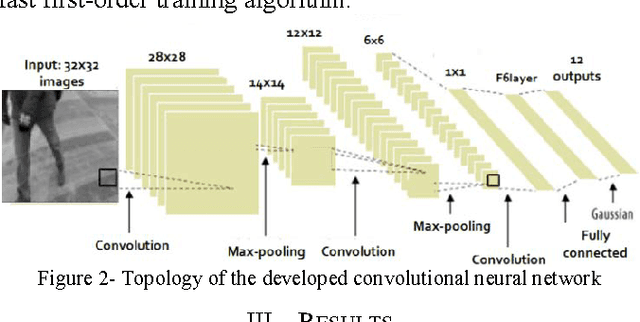
Abstract:In this paper, a method to detect environmental hazards related to a fall risk using a mobile vision system is proposed. First-person perspective videos are proposed to provide objective evidence on cause and circumstances of perturbed balance during activities of daily living, targeted to seniors. A classification problem was defined with 12 total classes of potential fall risks, including slope changes (e.g., stairs, curbs, ramps) and surfaces (e.g., gravel, grass, concrete). Data was collected using a chest-mounted GoPro camera. We developed a convolutional neural network for automatic feature extraction, reduction, and classification of frames. Initial results, with a mean square error of 8%, are promising.
Radon-Gabor Barcodes for Medical Image Retrieval
Sep 16, 2016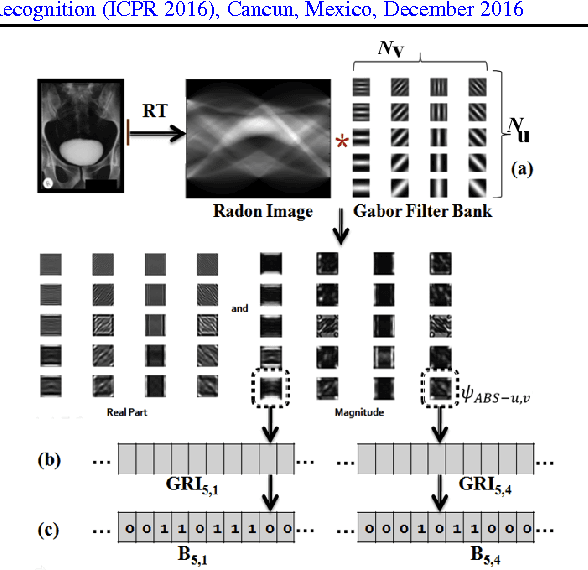
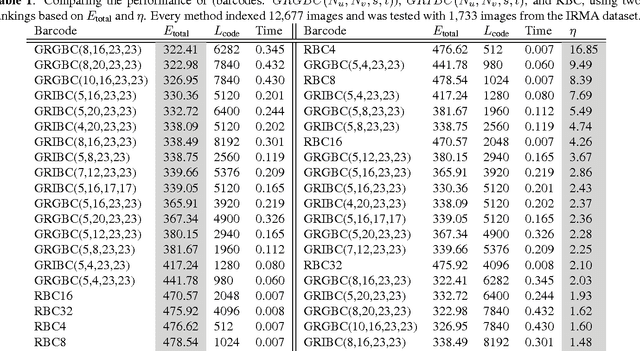
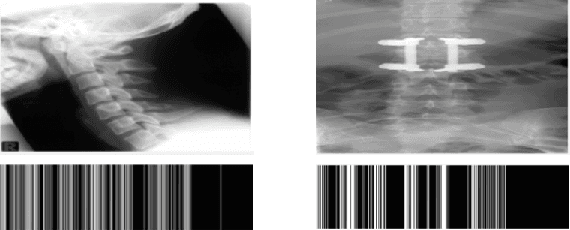
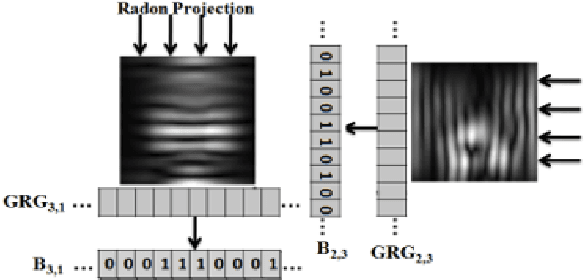
Abstract:In recent years, with the explosion of digital images on the Web, content-based retrieval has emerged as a significant research area. Shapes, textures, edges and segments may play a key role in describing the content of an image. Radon and Gabor transforms are both powerful techniques that have been widely studied to extract shape-texture-based information. The combined Radon-Gabor features may be more robust against scale/rotation variations, presence of noise, and illumination changes. The objective of this paper is to harness the potentials of both Gabor and Radon transforms in order to introduce expressive binary features, called barcodes, for image annotation/tagging tasks. We propose two different techniques: Gabor-of-Radon-Image Barcodes (GRIBCs), and Guided-Radon-of-Gabor Barcodes (GRGBCs). For validation, we employ the IRMA x-ray dataset with 193 classes, containing 12,677 training images and 1,733 test images. A total error score as low as 322 and 330 were achieved for GRGBCs and GRIBCs, respectively. This corresponds to $\approx 81\%$ retrieval accuracy for the first hit.
Gabor Barcodes for Medical Image Retrieval
May 14, 2016
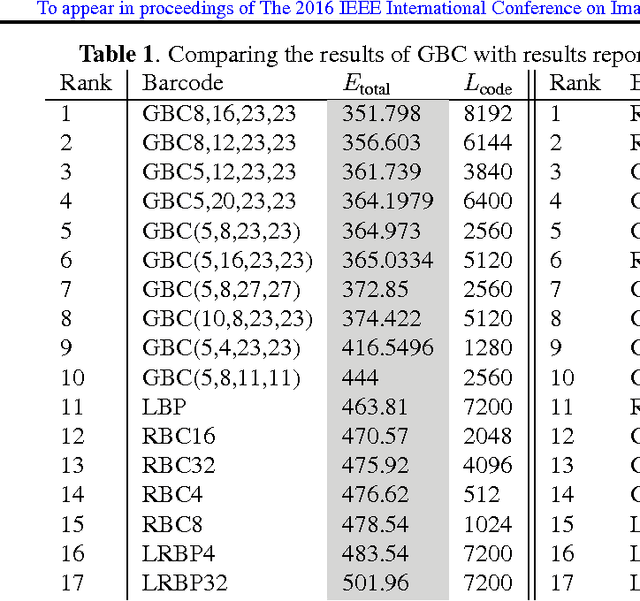
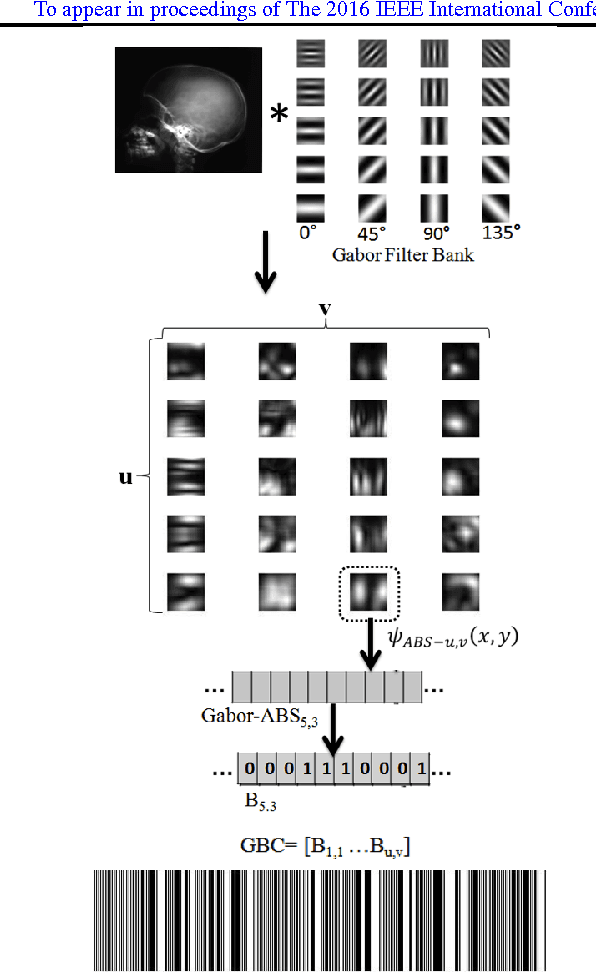
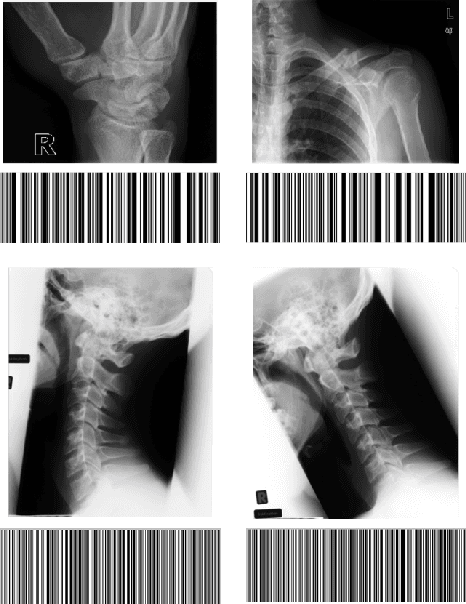
Abstract:In recent years, advances in medical imaging have led to the emergence of massive databases, containing images from a diverse range of modalities. This has significantly heightened the need for automated annotation of the images on one side, and fast and memory-efficient content-based image retrieval systems on the other side. Binary descriptors have recently gained more attention as a potential vehicle to achieve these goals. One of the recently introduced binary descriptors for tagging of medical images are Radon barcodes (RBCs) that are driven from Radon transform via local thresholding. Gabor transform is also a powerful transform to extract texture-based information. Gabor features have exhibited robustness against rotation, scale, and also photometric disturbances, such as illumination changes and image noise in many applications. This paper introduces Gabor Barcodes (GBCs), as a novel framework for the image annotation. To find the most discriminative GBC for a given query image, the effects of employing Gabor filters with different parameters, i.e., different sets of scales and orientations, are investigated, resulting in different barcode lengths and retrieval performances. The proposed method has been evaluated on the IRMA dataset with 193 classes comprising of 12,677 x-ray images for indexing, and 1,733 x-rays images for testing. A total error score as low as $351$ ($\approx 80\%$ accuracy for the first hit) was achieved.
 Add to Chrome
Add to Chrome Add to Firefox
Add to Firefox Add to Edge
Add to Edge